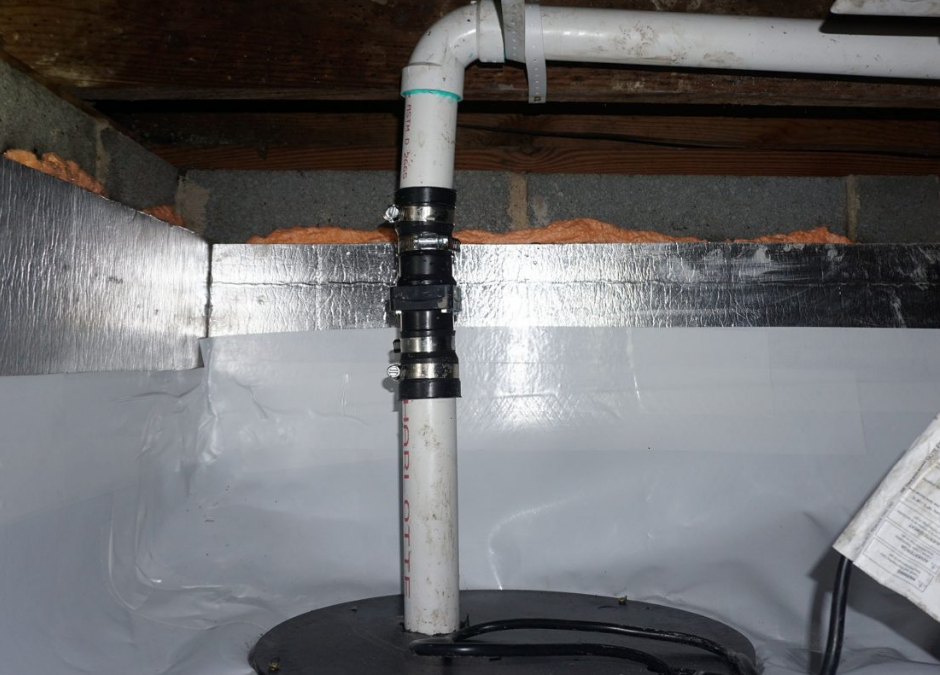Basements and crawl spaces can be a great asset to a home by creating more storage space or square footage. If this space has water damage, that can become a huge issue because it can lead to foundation and structural problems, as well as causing damage to the area and what was located there – memorabilia, carpet, drywall, furniture. Water damage from flooding can also cause a host of medical concerns from mildew, toxic mold, and poor indoor air quality. Sump pumps are here to stop that from happening. Invented in the 1940s by Karl Neidermeyer, an electrician in the U.S. Navy, they have become pretty common in buildings across the United States, because no one wants to deal with a wet basement or crawl space. Your home probably has a sump pump. If it isn’t working, or you don’t have one, don’t wait to have one installed. They can save the day no matter where the flooding is coming from – groundwater, a broken washing machine, water heater, burst pipe, or torrential rainfall.
Groundwater can accumulate and become a problem for homeowners – you can’t always see where it is pooling. Depending on where you live, water may be able to travel down through the ground and pool in underground aquifers, or flow into the nearest pond or stream. In some situations, lots of rain could cause groundwater to flow toward another low spot – your home’s foundation. To prevent it from seeping into your basement or crawl space, a sump pump will draw the water into its basin and then disperse it through the discharge pipe, away from your home and foundation.
If you look in your crawlspace or basement, near an outer wall, you will see a sump basin or pit. The ideal spot would be at the lowest point in the floor, so that any water will flow into the basin. The basin itself is usually covered to prevent debris from falling in. There will be some holes in the wall of the basin, which connect to the drainage system. Some parts of the drainage system are located outside the foundation, but most of it is under the basement floor. If water starts to accumulate around the outside of your foundation, or under the floor, it will flow through those drain pipes and into the sump basin. The water in the basin rises and activates the pump once it reaches a specific level. Some pumps are activated by a pressure sensor that can measure water pressure, and some use a float activator arm, which has a buoy that floats and rises with the water and turns on the pump when it reaches a certain height.
Once the pump is turned on, an impeller moves water out of the basin and pushes it up a discharge pipe, using centrifugal force. The discharge pipe should be discharging water outside the perimeter of your foundation and it should flow downhill if possible, to prevent the water from flowing back toward your home. Another key is to have these pipes buried at least 5 inches below the frost line to prevent them from freezing in cold weather. Sump pumps are not something we think or talk about much, but they are a key feature in protecting your home from water damage caused by flooding. Keeping them in top shape is important so that they are ready to go, the moment they are needed. Damage from water can number in the tens of thousands of dollars or more. Having a working sump pump will cost you somewhere between $500 and $3,000. Save yourself the headache of dealing with a flooded basement or crawl space by making sure your sump pump is ready to go.
If you aren’t sure whether your current sump pump is up for the job, or you want to check that the discharge pipe is properly located, give Tidewater Home Improvement a call today. We can check out your sump pump and ensure that it is in top shape. Don’t wait for the forecast to call for flooding, get your sump pump some TLC today.


Recent Comments